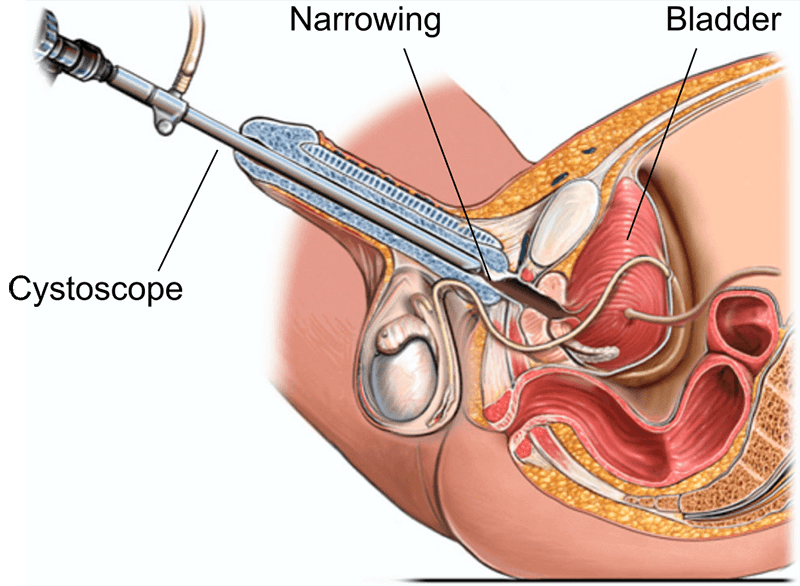Urethrotomy (Direct Vision Internal Urethrotomy – DVIU)
A urethrotomy is a surgical procedure used to treat urethral stricture, a condition where the urethra (the tube that carries urine from the bladder to the outside of the body) becomes narrowed due to scar tissue. This narrowing can restrict the flow of urine, leading to uncomfortable or bothersome urinary symptoms.
The goal of urethrotomy is to relieve the narrowing by making a small incision in the scarred tissue, restoring a more normal urinary flow and relieving pressure on the bladder.
What causes urethral stricture?
Urethral stricture can develop due to:
- Scarring from previous surgeries or catheterisation
- Trauma or injury
- Inflammation or infection
Symptoms of Urethral Stricture
You may be experiencing a urethral stricture if you notice:
- Weak or slow urine stream
- Incomplete bladder emptying
- Urinary urgency or frequency
- Nocturia (waking up at night to urinate)
- Difficulty starting urination
Who is suitable for Urethrotomy?
Urethrotomy is often recommended for:
- Men diagnosed with urethral stricture who experience bothersome urinary symptoms
- Patients seeking a minimally invasive surgical solution with short recovery time

Benefits of Urethrotomy
- Quick and minimally invasive procedure
- Typically rapid improvement in urinary symptoms
- No skin incisions required
- Short hospital stay (usually overnight)
How is the Procedure Performed?
- Performed under general anaesthesia
- A cystoscope (a small camera) is inserted through the urethra
- The narrowed section is incised or dilated using a fine instrument or laser
- The procedure typically takes less than an hour
- A catheter is left in place overnight to allow healing
Recovery and What to Expect
- Most patients return to light activity within 3–5 days
- Full recovery may take up to 4 weeks
- You may experience:
- Burning or stinging with urination
- Blood in the urine (for 2–4 weeks, may be intermittent)
- Urgency, frequency, or difficulty controlling the urge
- These symptoms usually improve within 2 weeks, though bladder-related symptoms may take up to 3 months
Outcomes and Considerations
- Most patients experience immediate relief in urine flow and pressure
- In some cases, scar tissue may recur, requiring a repeat procedure
- You may be advised to perform intermittent self-catheterisation to prevent recurrence
- For recurrent or complex strictures, your urologist may discuss urethroplasty (a more definitive surgical repair)
Post-Operative Care
What to Expect:
- Catheter: A catheter may be in place temporarily—your doctor will advise on its removal
- Blood in urine: Common for 2–4 weeks and usually intermittent
- Bladder symptoms: May persist for a few weeks but generally improve within 3 months
- Burning/stinging with urination: May last days to weeks; Ural sachets can help
